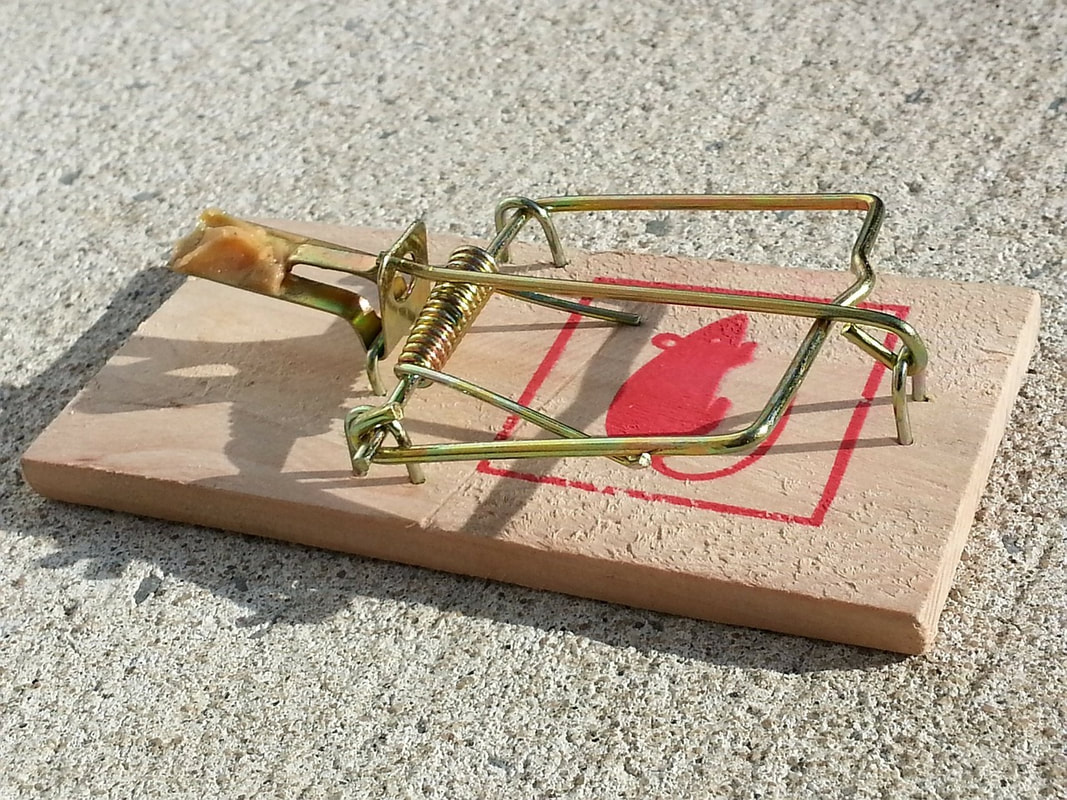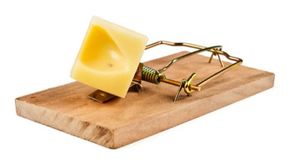
Winter is a prime time to find unwanted mice in your home. They will enter in search of food, water, and a warm shelter. Exclusion efforts, like sealing the exterior of your home, are important to help prevent them, but nearly every home will experience a rodent problem at some point or another. When you stumble across the signs of rodent activity, knowing how and where to set a trap can help you get rid of the problem as quickly as possible.
Choose the Right Bait
Do you think mice love cheese? Think again! Although the connection between mice and cheese has been around for centuries, it is a myth. Recent scientific studies have determined that mice are not drawn to cheese, and in some cases, the smell may actually repel them. If you want your trapping experience to be successful, choose a bait that will attract them. Good choices include foods that mice eat naturally like grains, fruits, and vegetables. It has also been shown that mice love nuts and sugary sweets, so peanut butter and chocolate are also encouraged.
Use the Right Amount
More bait does not equal more mice. When setting a trap, you want to use a small, pea-sized amount of your chosen bait. If the size of the bait is too large, it will allow the mice to eat around the bait without ever touching the trigger.
Wear Gloves
It might seem like a no-brainer to use gloves when handling a previously used trap because gloves prevent the spread of germs and disease, but there is another important reason why you should always wear gloves. Mice have a very good sense of smell. They will be drawn to the bait, but may become wary of human scents on it. Wearing gloves will help this problem and ensure that your bait is untainted.
Know How and Where to Place Traps
Mice are creatures of habit and will move along the same routes over and over. They rarely enter open spaces and prefer to keep to the edges of the room. Before setting a trap, look for evidence of mouse activity. This may include feces, chew marks, holes in food packaging, etc. You will want to place the traps in these areas. When you set the traps, place them perpendicular to the wall, with the bait and trigger end facing the wall. The mice will have easier access to the food from both directions without having to leave the security of the wall.
Use Multiple Traps
When it comes to catching a mouse, more traps will generally be more effective. Not only will it provide more opportunities for the mouse to find the bait, but where there is one mouse, there are usually more. In areas that show major signs of rodent activity, place traps every 2-3 feet. You will want to place these traps in dark, hidden areas where mice are likely to live. Common places where mice may be found include: pantries, behind appliances, under furniture, in cupboards, in laundry rooms, and in storage areas.
Mice can be a real problem. They not only carry and transmit germs and diseases, but they can also do property damage by chewing through walls and electrical wiring. Trapping can be very effective for the occasional mouse, but if you have a large infestation on your hands, it might be wise to hire a professional. Pest control technicians are trained to be able to recognize and seal entry points, and they know how to properly use baits and rodenticide. The experts at GTA Toronto Pest Control are your go-to source for rodent control in Brampton and surrounding areas. We will customize a plan to get rid of the mice and solve your pest problems. Contact us today for more information.











